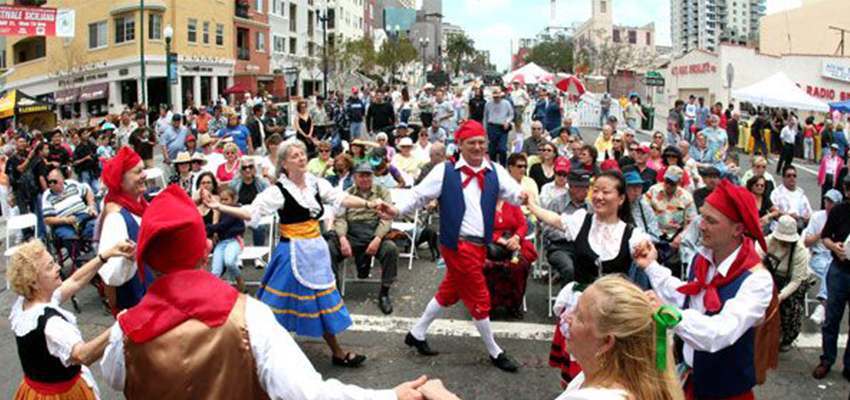
We all know too much of a good thing can weigh you down. Like that time your grandmother made just enough Italian food to feed half of a Roman legion when only 5 people were at the dinner table. Sunday dinners are a wonderful experience, but the car ride home can prove to be very dangerous if you’re falling asleep at the wheel from what expert scientists refer to as “the itis”. Exercise is proven to battle this epidemic and get the blood flowing from the stomach to the legs and the rest of the body. What better exercise to liven things up at Sunday dinner than some traditional Italian dances? Even if you’re not Italian, these dances are great to get the heart pumping and bring some life back into you for the long road ahead. Like most things in Italy, every dance has a folklore that follows each origin.
Monferrina is a lively Italian folk dance in 6/8 time named after the place of its origin, Montferrat, in the Italian region of Piedmont. It has spread from Piedmont throughout Northern Italy, in Lombardy, Emilia-Romagna, Friuli-Venezia Giulia and even into Switzerland. In Piedmont, it is usually accompanied by singing and it is danced by several couples. The dance starts with two circular promenades by couples arm-in-arm using a lively march step. The individual couples then join both hands for a cross-step with bent knees. The dance often contains bows and mimed teasing and coaxing. The dance became popular in the country side of Piedmont in the 18th century and was used an early matchmaker for families looking to get their sons and daughters together. Who needs Match.com when you have overbearing parents and this dance?
Frulana is an Italian folk dance from the Italian region of Friuli Venezia Giulia. It dates at least to 1583, when a “ballo furlano” called L’arboscello was published in Pierre Phalèse the Younger’s Chorearum molliorum collectanea and in Jakob Paix’s organ tablature book, though its chief popularity extended from the late 1690s to about 1750. Originally the furlana was a courtship dance, performed by a couples.
Tarantella is one of the oldest traditional Italian folk dances that originated in Puglia. In the region, the bite of the Italian wolf spider known as the tarantula was known to cause an illness called tarantism which caused mass hysteria and illness. The folklore was that the only cure for this illness was to dance hysterically to prevent death from the bite and sweat the poison out.